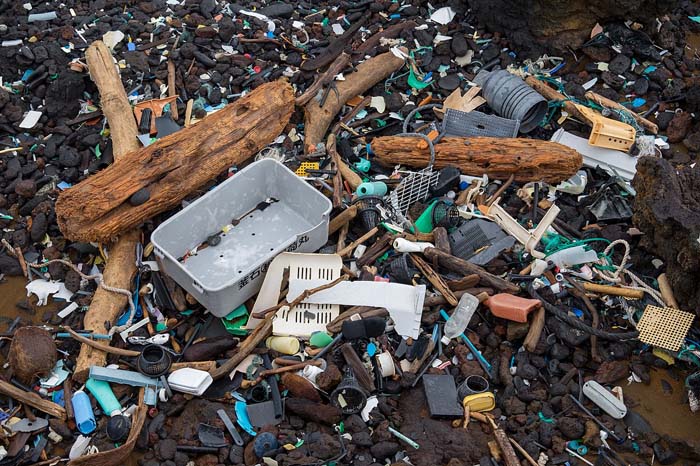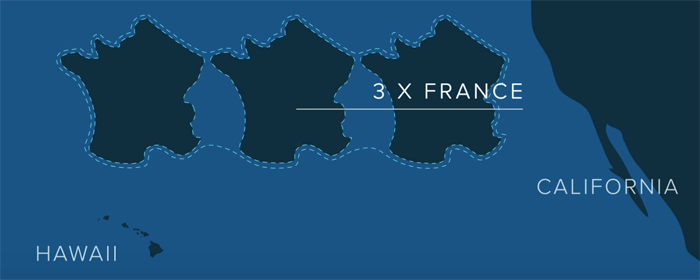
The GPGP covers an estimated surface area of 1.6 million square kilometers, an area twice the size of Texas or three times the size of France.
[dropcap]T[/dropcap]he Great Pacific Garbage Patch (GPGP) is the largest of the five offshore plastic accumulation zones in the world’s oceans. It is located halfway between Hawaii and California.
PLASTIC ACCUMULATION
It is estimated that 1.15 to 2.41 million tonnes of plastic are entering the ocean each year from rivers. More than half of this plastic is less dense than the water, meaning that it will not sink once it encounters the sea.
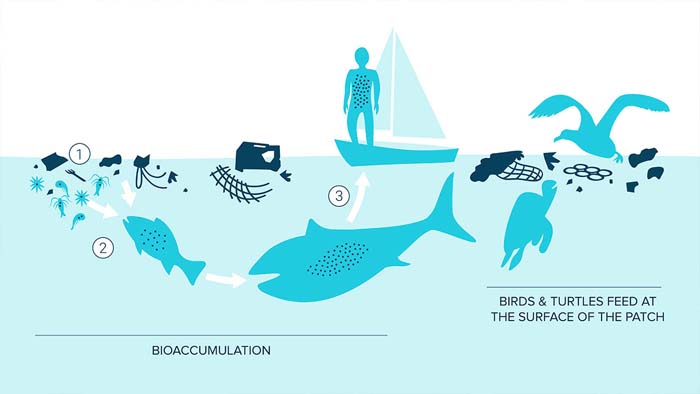
Not only does plastic pollution in the Great Pacific Garbage Patch pose risks for the safety and health of marine animals, but there are health and economic implications for humans as well.
The stronger, more buoyant plastics show resiliency in the marine environment, allowing them to be transported over extended distances. They persist at the sea surface as they make their way offshore, transported by converging currents and finally accumulating in the patch.
Once these plastics enter the gyre, they are unlikely to leave the area until they degrade into smaller microplastics under the effects of sun, waves and marine life. As more and more plastics are discarded into the environment, microplastic concentration in the Great Pacific Garbage Patch will only continue to increase.
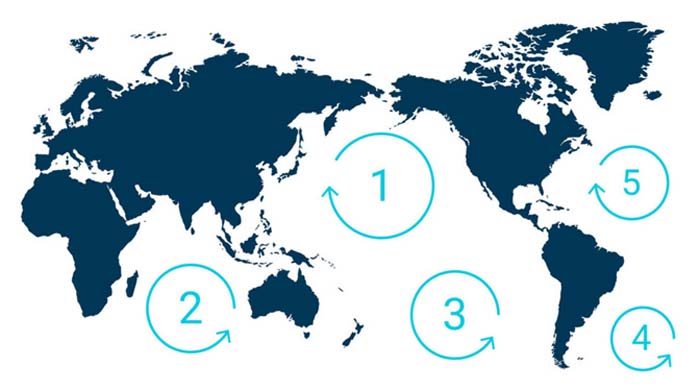
The term, Great Pacific Garbage Patch, was coined by Charles J. Moore, returning home through the North Pacific Gyre after competing in the Transpac sailing race in 1997.
ESTIMATION OF SIZE
The GPGP covers an estimated surface area of 1.6 million square kilometers, an area twice the size of Texas or three times the size of France.
To formulate this number, the team of scientists behind this research conducted the most elaborate sampling method ever coordinated.
This consisted of a fleet of 30 boats, 652 surface nets and two flights over the patch to gather aerial imagery of the debris.
Sampling at different locations within the same time period allowed a more accurate estimate of the size of the patch and the plastic drifting in it.
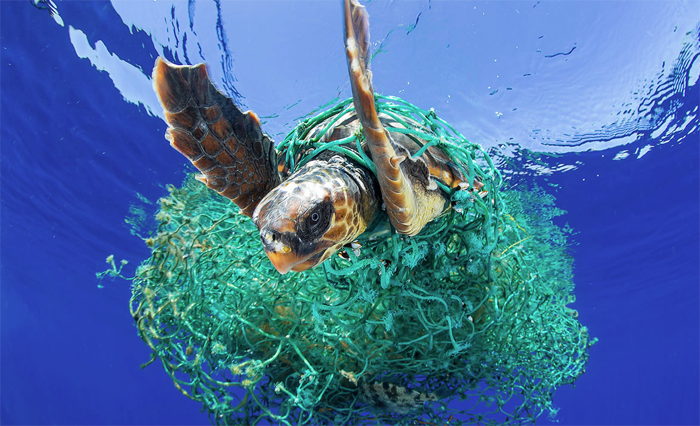
A sea turtle entangled in a ghost net. Fishing nets account for 46% of the mass in the GPGP and they can be dangerous for animals who swim or collide into them and cannot extract themselves from the net. Interaction with these discarded nets, also known as ghost nets ghost nets – resulting in the death of the marine life involved. Photo credit Francis Perez.
Read, see, and watch more . . .
Featured Image – The Great Pacific garbage patch causes vast quantities of trash to wash ashore at the south end of Hawaii. A scenic coastline spoiled by debris. Justin Dolske from Cupertino, USA – a commons image.


